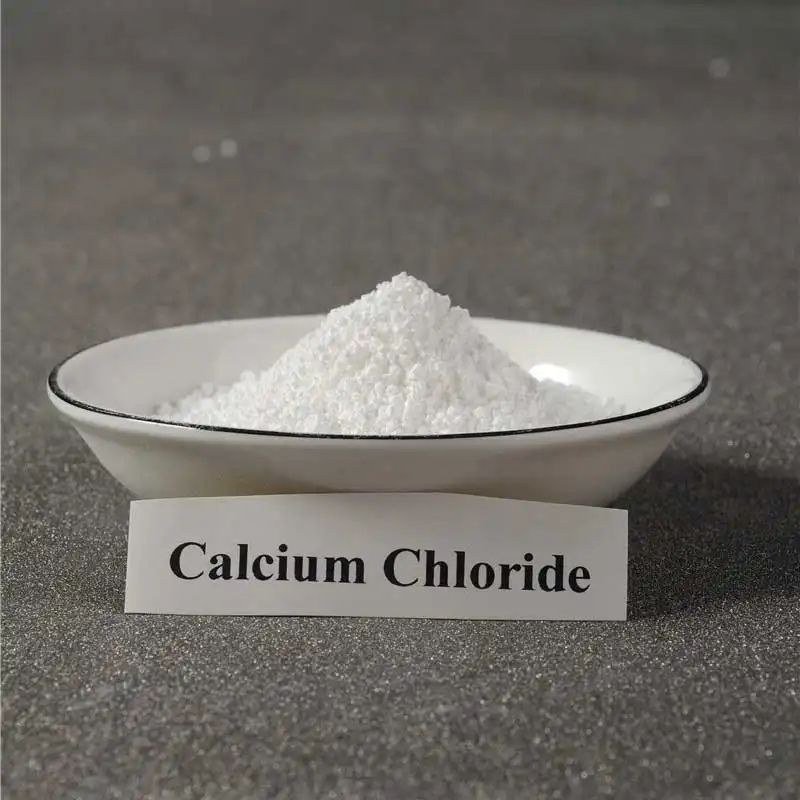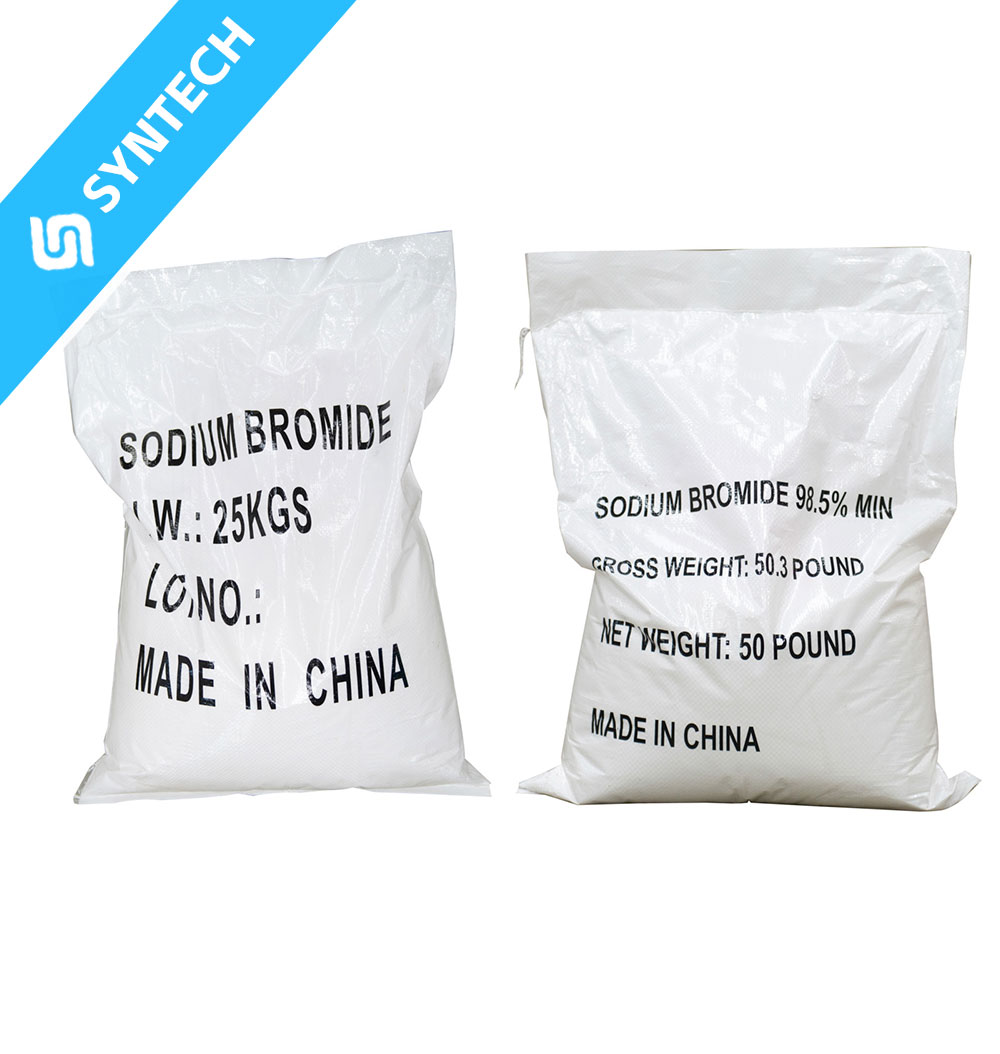Potassium bromate (KBrO₃) is an important inorganic compound with a wide range of industrial applications due to its strong oxidizing properties. This white crystalline powder has played significant roles in food processing, chemical manufacturing, water treatment, and analytical chemistry. However, as scientific research has revealed its potential health risks, the global use of potassium bromate—especially as a food additive—has faced strict regulations or outright bans. This article provides a detailed examination of potassium bromate’s major industrial applications, its mechanisms of action, regulatory restrictions, alternative solutions, and future trends.
Basic Properties and Chemical Characteristics
Potassium bromate is an inorganic salt with the chemical formula KBrO₃ and a molecular weight of 167.0. It appears as white rhombic crystals or crystalline powder, odorless and tasteless. Its physical properties include a density of 3.27 g/cm³ and a melting point of 350°C, decomposing at 370°C into potassium bromide and oxygen. Its aqueous solution is neutral, highly stable at room temperature, but may react explosively when heated or mixed with reducing agents.
From a chemical perspective, potassium bromate’s most notable feature is its strong oxidizing ability. In acidic environments, it serves as a powerful oxidizer with a standard electrode potential of 1.44V, capable of oxidizing various reducing substances. Its oxidation process is often “slow-acting,” becoming more potent under changing conditions (e.g., increased temperature or decreased pH). This controlled oxidation makes it particularly useful in industrial processes requiring phased reactions, such as bread baking.
Potassium bromate is typically prepared by two methods: (1) passing bromine vapor through a potassium hydroxide solution to produce a mixture of potassium bromate and bromide, followed by crystallization for separation; or (2) reacting barium bromate with potassium sulfate, then filtering, crystallizing, and drying the product.
From a safety standpoint, potassium bromate is classified as an oxidizing hazardous substance(UN1484), falling under Class 5.1 dangerous goods with Packing Group II. Safety warnings include R45 (may cause cancer), R9 (explosive when mixed with combustible materials), R25 (toxic if swallowed), and R22 (harmful if swallowed). Storage requires cool, dry conditions away from heat and organic materials.
Table: Basic Physicochemical Properties of Potassium Bromate
| Property | Value | Remarks |
|---|---|---|
| Chemical formula | KBrO₃ | Inorganic salt compound |
| Molecular weight | 167.0 | – |
| Appearance | White crystals/powder | Odorless |
| Density | 3.27 g/cm³ | At 25°C |
| Melting point | 350°C | Decomposes at 370°C |
| Solubility (water) | 7.5g/100mL (25°C) | Increases significantly with temperature |
| Oxidizing ability | Strong oxidizer | More potent in acidic conditions |
| Hazard class | Class 5.1 oxidizer | UN1484 |
Historical and Current Use in the Food Industry
Potassium bromate has been used in the food industry—particularly baking—for over a century. In 1914, it was first introduced commercially in the U.S. baking industry through a patent by Ward Baking Company and the University of Pittsburgh. Germany followed in 1926, becoming the first European country to use potassium bromate in yeast-fermented dough, initially as a spray solution and later as a dry powder. In 1941, the U.S. FDA approved its use in flour at 75 ppm, extending this to bread and rolls in 1952.
In bread-making, potassium bromate primarily acts as a dough strengthener. When flour and water mix to form dough, potassium bromate’s oxygen molecules react with sulfhydryl groups (-SH) in gluten, forming disulfide bonds (-S-S-) that create a stronger protein network. This improves dough elasticity and gas retention during fermentation, resulting in larger loaf volume and finer crumb structure. Compared to other oxidizers, potassium bromate’s “slow-acting” oxidation provides better process control.
Another key application was as a flour bleach. Freshly milled wheat flour has a yellowish tint that naturally whitens through oxidation during aging. Potassium bromate accelerates this process by oxidizing carotenoid pigments while inhibiting protease activity to preserve gluten strength. Its effectiveness and low cost made it a baking industry staple throughout the 20th century.
However, studies in the 1980s revealed that baking doesn’t always fully convert potassium bromate into harmless bromide, with residues detected up to 300 ppb. This led to global restrictions:
- The EU banned it in 1990 (UK first)
- Canada phased it out by 1994
- China prohibited it in 2005 after reducing limits from 50→30 ppm
- The U.S. still permits 50 ppm (75 ppm for whole wheat) but California will ban it in 2027
Table: Potassium Bromate’s Effects in Food Applications
| Application | Primary Effect | Mechanism | Process Advantage |
|---|---|---|---|
| Dough improving | Strengthens gluten | Forms disulfide bonds in proteins | Better gas retention, larger volume |
| Flour treatment | Accelerates aging | Oxidizes reducing compounds | Reduces storage time/costs |
| Bleaching | Whitens flour | Oxidizes carotenoid pigments | More appealing flour color |
| Fermentation control | Stabilizes dough | Inhibits protease activity | More consistent product quality |
Diverse Applications in Chemical Manufacturing
Beyond food, potassium bromate serves as a versatile reagent in chemical industries, valued for its oxidizing power and stability. Industrial applications involve stricter safety protocols to mitigate risks to workers and the environment.
In organic synthesis, potassium bromate acts as an efficient oxidizer. For example, the KBrO₃-H₃PO₄ system selectively brominates acetophenone with high yield under mild conditions. It also synthesizes pharmaceutical intermediates like fluorinated/chlorinated benzoic acids used in antibiotics and anti-inflammatory drugs.
In fine chemicals production, potassium bromate is essential for making Dess-Martin periodinane—a crucial reagent for alcohol-to-carbonyl oxidation. It also produces other organic oxidants (e.g., 2-iodoxybenzoic acid) that convert alcohols to aldehydes/ketones cleanly.
For water treatment, potassium bromate enables advanced oxidation processes (AOPs) to degrade organic pollutants via reactive oxygen species. Though not widely adopted due to cost and residual concerns, it offers fewer byproducts than chlorine in specific wastewater scenarios.
In analytical chemistry, potassium bromate titration quantifies reducing agents like Fe²⁺, Cu⁺, or I⁻ in acidic solutions. Using indicators like methyl orange, the endpoint is marked by irreversible color loss as excess BrO₃⁻ generates bromine. This method accurately measures compounds like isoniazid (an anti-tuberculosis drug).
Dye and pigment industries employ potassium bromate to synthesize anthraquinone dyes, where its controlled oxidation avoids over-reaction while maintaining product purity—advantages over traditional oxidants like potassium dichromate.
Table: Industrial Applications of Potassium Bromate in Chemical Manufacturing
| Sector | Example Uses | Mechanism | Benefits |
|---|---|---|---|
| Organic synthesis | Acetophenone bromination | Provides Br atoms/oxidation | High selectivity/yield |
| Fine chemicals | Dess-Martin reagent synthesis | Key oxidizing agent | High-purity products |
| Water treatment | Industrial wastewater AOPs | Generates reactive oxygen | Fewer harmful byproducts |
| Analytical chemistry | Redox titrations | Strong acidic oxidation | Clear endpoints, simple method |
| Dye industry | Anthraquinone dye production | Controlled intermediate oxidation | Prevents over-oxidation |
Safety remains paramount, as potassium bromate’s strong oxidation risks fires/explosions when contacting organics. Proper ventilation, protective gear, and segregated storage are essential, adding to operational costs and driving searches for safer alternatives.
Health Risks and Regulatory Restrictions
Extensive research has identified potassium bromate as a multifaceted health hazard, prompting global regulatory action. Key findings include:
- Carcinogenicity: Japanese (1983) and British animal studies showed kidney tumors, peritoneal mesotheliomas, and thyroid cancers at ≥30 ppm doses. IARC classifies it as carcinogenic.
- Genotoxicity: Positive in micronucleus, chromosome aberration, and sperm abnormality tests, indicating mutagenic and clastogenic effects.
- Acute toxicity: Human fatalities occur at 5–500 mg/kg, causing vomiting, renal failure, and CNS depression. Survival may lead to chronic kidney damage.
Consequently, JECFA (1992) deemed potassium bromate inappropriate for food use, triggering worldwide bans:
- EU/UK: Banned 1990
- Canada: Voluntary phase-out by 1994
- China: Prohibited in 2005 after limiting to 30 ppm (1996)
- U.S.: Still allowed (50 ppm) but California will ban by 2027
- Japan/S. Korea: Early adopters of bans
Developing nations like Peru and Indonesia still permit limited use with residue requirements.
Table: Global Regulatory Status of Potassium Bromate in Food
| Region | Status | Key Timeline | Residue Limit |
|---|---|---|---|
| EU | Banned | 1990 (UK first) | Undetectable |
| Canada | Banned | 1994 | Undetectable |
| China | Banned | 2005 | Undetectable |
| Australia/NZ | Banned | 1990s | Undetectable |
| U.S. (federal) | Restricted (50 ppm) | 1991 limit reduction | Minimize residues |
| U.S. (California) | Ban starts 2027 | 2023 law passed | Undetectable |
| Japan | Banned | 1980s | Undetectable |
Non-food industrial uses face occupational safety rules (e.g., PPE requirements) and environmental regulations for disposal. These compliance burdens increasingly favor alternative technologies.
Alternatives and Future Perspectives
Industry has developed multiple safer substitutes for potassium bromate across applications:
Baking industry replacements:
- Ascorbic acid (Vitamin C): Oxidizes -SH groups safely but may be less effective for strong flours
- Glucose oxidase: Enzyme-generated H₂O₂ strengthens gluten; costly but clean-label
- Composite enzymes: Blends (e.g., lipoxygenase + amylase) mimic multiple bromate functions
- Physical treatments: Air classification/heat processing replace chemical bleaching
Chemical manufacturing alternatives:
- H₂O₂/HBr: For brominations, yielding only water as byproduct
- O₂/metal catalysts: Greener aerobic oxidations in pharma intermediates
- Instrumental analysis: HPLC/IC/MS replace bromate titrations for precision
- AOPs: Ozone/UV or photocatalysis degrade organics without bromate residues
Table: Potassium Bromate Alternatives by Sector
| Industry | Leading Substitutes | Advantages | Drawbacks |
|---|---|---|---|
| Baking | Vitamin C, glucose oxidase | Safe, natural, clean-label | Potency varies by flour type |
| Baking | Enzyme blends | Multi-functional | Higher cost, process-sensitive |
| Flour treatment | Physical processing | No chemical residues | Expensive equipment |
| Organic synthesis | H₂O₂/aerobic oxidation | Green chemistry compliant | May need precious metal catalysts |
| Analytics | Instrumental methods | High accuracy/sensitivity | Capital-intensive |
| Water treatment | Ozone/UV AOPs | No harmful byproducts | Energy-intensive |
Future trends suggest:
- Food sector: Tighter global bans (e.g., U.S. post-California 2027), with innovation in enzymatic/physical solutions
- Chemical industry: Green oxidation methods (catalytic, electrochemical) gaining ground
- Market shifts: Developing nations gradually adopting restrictions as detection methods improve
- Research focus: Advanced toxicity studies, residue detection, and specialized non-food uses (e.g., electronics)
Ultimately, potassium bromate’s industrial role is transitioning toward niche applications under strict controls, while health-conscious and sustainable alternatives dominate mainstream markets. This shift reflects evolving regulatory priorities and technological capabilities—a reminder that industrial practices must balance performance with safety.






